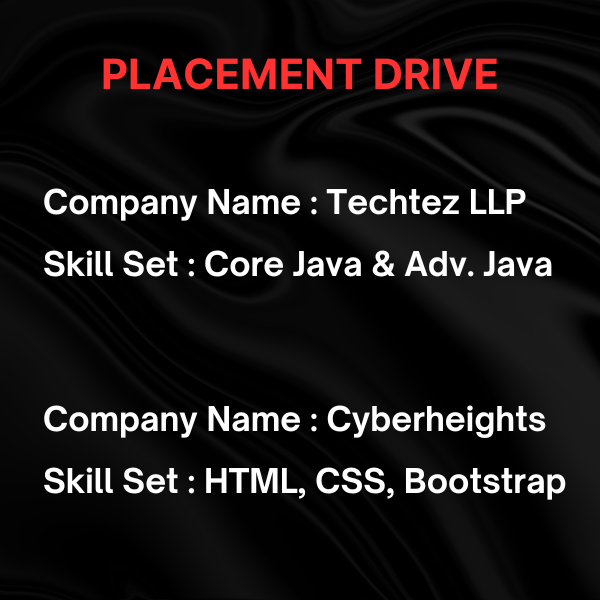×
Course Categories
×
Product Categories
Best Angular Interview Questions
For fresher’s to 5 years experienced
5.0
5.0
4.6
Angular Interview Questions Angular FAQ
Hi, Welcome to Monopoly IT Solutions, our Interview Questions / FAQs can be very helpful for interview preparation in several ways:
- Understanding the way how Questions are asked by interviewer
- Practicing Answers, find our appropriate ways of answeringand excel the interview
- Gaining Insight into the industry standard
- Reducing Anxiety of Interview
- Self analysis of Key Skills
Following are the conceptual theory questions
- Angular is an open-source front-end web framework. It is one of the most popular JavaScript frameworks that is mainly maintained by Google. It provides a platform for easy development of web-based applications and empowers the front end developers in curating cross-platform applications.
- A few of the major advantages of using Angular framework are listed below:
- It supports two-way data-binding
- It follows MVC pattern architecture
- It supports static template and Angular template
- You can add a custom directive
- It also supports RESTfull services
- Validations are supported
- Client and server communication is facilitated
- Support for dependency injection
- Has strong features like Event Handlers, Animation, etc.
- TypeScript is a superset of JavaScript that offers excellent consistency. It is highly recommended, as it provides some syntactic sugar and makes the code base more comfortable to understand and maintain. Ultimately, TypeScript code compiles down to JavaScript that can run efficiently in any environment.
- Single-page applications are web applications that load once with new features just being mere additions to the user interface.
- It does not load new HTML pages to display the new page's content, instead generated dynamically.
- This is made possible through JavaScript's ability to manipulate the DOM elements on the existing page itself.
- A SPA approach is faster, thus providing a seamless user experience.
- Decorators are a design pattern or functions that define how Angular features work. They are used to make prior modifications to a class, service, or filter. Angular supports four types of decorators, they are:
- Class Decorators
- Property Decorators
- Method Decorators
- Parameter Decorators
- In Angular, every component has a lifecycle. Angular creates and renders these components and also destroys them before removing them from the DOM. This is achieved with the help of lifecycle hooks.
- ngOnChanges() - Responds when Angular sets/resets data-bound input properties.
- ngOnInit() - Initialize the directive/component after Angular first displays the data-bound properties and sets the directive/component's input properties/
- ngDoCheck() - Detect and act upon changes that Angular can't or won't detect on its own.
- ngAfterContentInit() - Responds after Angular projects external content into the component's view.
- ngAfterContentChecked() - Respond after Angular checks the content projected into the component.
- ngAfterViewInit() - Respond after Angular initializes the component's views and child views.
- ngAfterViewChecked() - Respond after Angular checks the component's views and child views.
- ngOnDestroy - Cleanup just before Angular destroys the directive/component.
- Pipes are simple functions designed to accept an input value, process, and return as an output, a transformed value in a more technical understanding. Angular supports several built-in pipes. However, you can also create custom pipes that cater to your needs.
- Pipes are defined using the pipe “|” symbol.
- Pipes can be chained with other pipes.
- Pipes can be provided with arguments by using the colon (:) sign.
- Eager Loading - Eager loading is the default module-loading strategy. Feature modules under Eager loading are loaded before the application starts. This is typically used for small size applications.
- Lazy Loading - Lazy loading dynamically loads the feature modules when there's a demand. This makes the application faster. It is used for bigger applications where all the modules are not required at the start of the application.
- Dependency injection or DI, is a design pattern in which a class requests dependencies from external sources rather than creating them. Angular's DI framework provides dependencies to a class upon instantiation. Use Angular DI to increase flexibility and modularity in your applications.
- Promise
- 1. Emits only a single value at a time
- 2.Calls the services without .then and .catch
- 3. Cannot be canceled
- 4. Does not provide any operators
- Observable
- 1.Emits multiple values over a period of time
- 2.Is not called until we subscribe to the Observable
- 3.Can be canceled by using the unsubscribe() method
- 4.Provides the map, forEach, filter, reduce, retry, and retryWhen operators
- A Directive is a responsible for converting the static DOM element into dynamic. - It is responsible for extending the markup and making html more declarative. - Angular provides several pre-defines directives. Which are used to handle various interaction dynamically.
- - The directive in angular are category into 3 types.
- 1. Component Directives
- 2. Structural Directives
- 3. Attribute Directives
- It is an angular structural directive used to handle multiple condition in the UI and display only the content that is required for the situation.
- - Switch is used to interrupt the execution flow
- - ngSwitch is a selector switch that execution only the block that matched the condition.
- - The blocks that switch have to execute are define by using “ngSwitchCase”
- The default block have to execute when condition is not matching is defined by using “ngSwichdefault”
- Angular support all browser event provided by the browser object which are common across all client side framework and library the events are categories into following type.
- 1. Mouse event.
- 2. Key event.
- 3. Animation event.
- 4. Timer event.
- 5. Miscellaneous event.
- 6. Custom events.
- A Service is predefined business logic which can be reused in the application by injecting into component.
- - Technically service is a collection of factories and the factory is collection of related type of functions.
- - Factory uses a single call mechanism where a new object is required every time in order to access any functionality.
- - Services uses a single tern mechanism where an object is created only ones and the same object is used across multiple request.
- - You can access the function any number of time by using single object.
- - Services in angular is a class defined with set of function that return specified functionality.
- Template driven forms is a dynamic forms that can handle client side form is defined at template level. i.e. in html.
- - Most of the interactions are dynamically handled at UI level.
- - These forms are heavy on page and will take more time rendering (generating o/p).
- - The form and their elements in template are configure by using the directive.
- ➢ ngForm
- ➢ ngModel
- Angular Built-in validation CSS classes. - Angular provides a set of “predefined” CSS classes for validation.
- - The built-in classes can identify the state and apply effects automatically to any specified element.
- - The built in classes doesn’t have any predefined effects you have to configure the effects manually [explicitly] -
- The angular CSS classes are :
- Class name Description
- - ng-valid Applies effect when the input state is valid.
- - ng-invalid Applies effect when input state is invalid
- - ng-pristine Applies effect when the input field not yet modified.
- - ng-dirty Applies effect when input field is modify.
- - ng-touched Applies effect when input field touched.
- - ng-untouched Applies effect when input field untouched.
- Angular form Validation - Validation is the process of verifying user input.
- - Validation is required to insured that contradictory and unauthorized data is not get stored into the database.
- - Client side validations can be handled by using patterns, regular expressions and functions.
- - Angular provides predefined services to handle validation.
- - The angular validation services are categories into two types.
- ➢ Form state validation services.
- ➢ Input state validation services.
- It is technique used to configure user and SEO friendly navigation in application.
- An Environment contains files that are required for starting application on various environments, ie. Development, testing and production.
- Declaration [] is a property used to Register the component of angular application.
- Import []is the property used to Register module used in angular application
Following are the coding based questions





